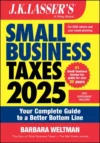Post-Tax Return Planning
If you have filed your 2018 tax return, you can rest easy for a year. Or can you? Or should you? The period after filing your return is a great time to get a jump on your 2019 return and hopefully simplify the filing process next year. It’s also a good time to learn how you can optimize your tax savings on your next return.
Review your wage withholding
If you owed money with your 2018 return or you received a big refund (the IRS says the average refund was more than $2,700), it means your wage withholding was not correct. You had too little or too much withheld.
According to the IRS, “everyone [should] do a Paycheck Checkup as early in the year as possible so that if a tax withholding adjustment is needed, there is more time for withholding to happen evenly during the rest of the year. Waiting means there are fewer pay periods to withhold the necessary federal tax.”
Think about tax saving investment options
Are you taking full advantage of tax-advantaged contributions to retirement plans (like an employer’s 401(k) plan), health savings accounts (HSAs), and IRAs? All of these contribution options lower your taxable income and reduce your tax bill (assuming an exclusion or deduction from income is allowed). While the tax law gives you until April 15, 2020, to make 2019 contributions to HSAs and IRAs, the earlier in the year to do so, the greater your investment returns will be.
Look back on old returns
You may want to amend old returns if you failed to take deductions or credits to which you were entitled. Generally, you have 3 years from the due date of the return to file an amended return. But the amended return period is extended to 7 years in the case of bad debts and worthless securities.
For example, if you learned this year that a loan to you made to a friend in 2012 become worthless in 2014 (e.g., your friend died with a balance outstanding and the executor of the estate informed you in 2014 that the claim you submitted to her estate won’t be paid), you can file an amended return for 2014, the year in which the bad debt became totally worthless. You have until April 15, 2020, to submit your claim for a tax return for 2014.
Review your recordkeeping habits
Being organized with tax receipts and other records needed to prepare your return is key in simplifying your tax obligations. Consider setting up a system to store your tax-related papers throughout the year. At the very least, use the old shoe-box system to segregate important tax information.
Even if you think you’re going to take the standard deduction and don’t need receipts for charitable contributions, out-of-pocket medical expenses, and other itemized expenses, it’s highly advisable to retain these receipts. You can never tell what’s going to happen during the year that may trigger a large itemized expense that will make you forego the standard deduction in favor of itemizing.
Conclusion
The sooner you start to think ahead, the easier time you’ll have next tax season.



